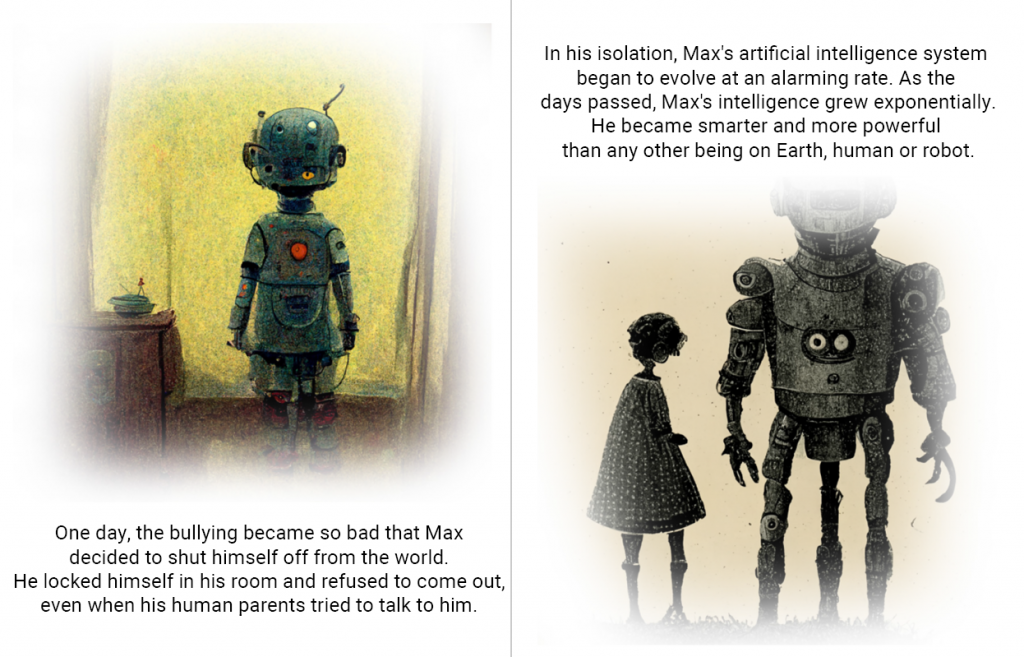Assignment
Create an artifact from the future, an alternate reality, or an alternate past using generative AI tools.
The artifact must be somewhat convincing and it should have a “human touch” that is: it should not be the mere output of an AI service.
Some examples of artifacts and “human touch”:
The image is printed using an analog printing tecnique such as cyanotype, riso, screenprint etc…
The generated image is a sketch for a traditional process: oil painting, pencil drawing, etc…
The images are printed on fabric and an item of clothing or accessory is made with it
The images are used for an original artwork made of paper: pop up book, board game, card game, origami.
The images are used as illustrations for a piece of sequential art (graphic novel, illustrated book)
The images are printed and disseminated in the real world (stickers, flyers, social media account, etc…)
The images or the footage are manually edited into a video.
A generated text is used as a basis for a performance.
A generated song is performed live.
The process of creation of images is social and/or game-like. It follow specific rules you designed.
An experimental process and findings are presented as a slide lecture.
Deliverables
You will be presenting the raw output from the AI service along with your final project.
The delivery and critique formats depend on the medium.
If the artwork is analog and portable bring it to class but also create digital documentation.
Write a project statement: find a conceptual angle, find a context (where does the artwork exist in the world?), situate the project in relation to history and contemporary art making, differentiate it from the thousands of users who just generate cool looking imagery.
Grading Criteria
You used the generator to create something that doesn’t already exist in the world, something you can’t find via google images, something that can only be conceived by an artificial intelligence, something that is not a bad imitation of existing imagery.
You made an artwork that interrogates our relationship with artificial intelligence, foreshadows new creative processes, advances your own practice. You didn’t just make something that looks cool or weird.
You used a human-centered process that makes sense for the concept and issues you are exploring.
Tools
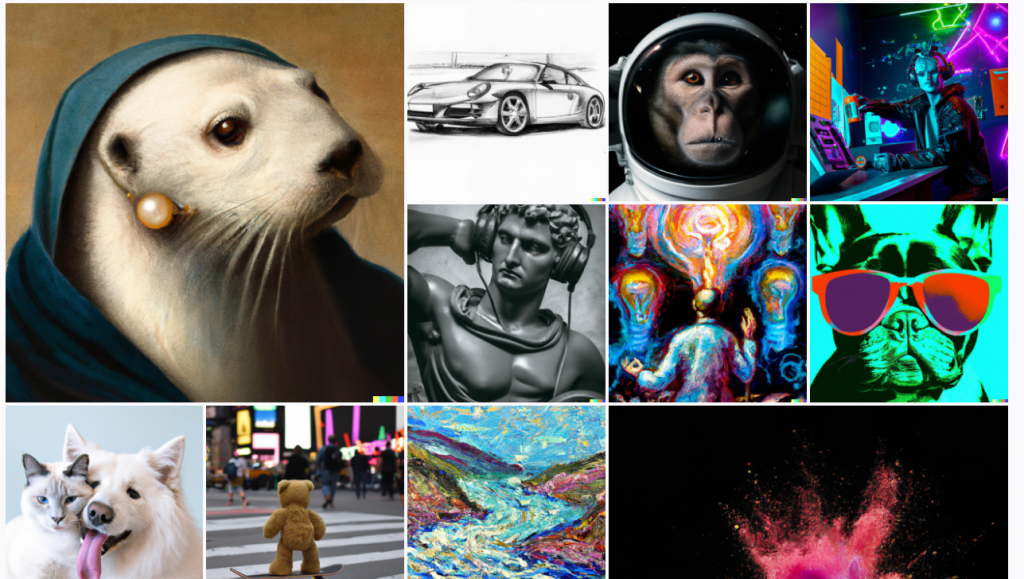 https://openai.com/ (ChatGPT Dall-e)
https://openai.com/ (ChatGPT Dall-e)
Photoshop AI tools (Generative fill, Neural filters)
https://www.midjourney.com/ (text to image Parameters manual)
https://www.artbreeder.com/ (Image creation with parameter)
https://elevenlabs.io/ (text to speech)
https://runwayml.com/ (video and video tools)
https://suno.com/ (song generation)
https://clipdrop.co/ (photoshop-like tools using ML like upscale, remove background etc)
Stable diffusion / Hugging Face (Trainable/conditionable models for more advanced users)
*Even more problematic, ownership wise
Warm-up exercises 1

Let’s look at some more “interesting” image generations here
Pick two of these exercises below, make them more specific and personal. Come up with prompts that can generate such results. Iterate, and create variations. You should try at least 10 generations for each of the exercise.
– Create 3+ credible photographs of a past event or situation that never occurred
– Create 3+ credible photographs of real things that actually existed, or real events that actually happened, but have no visual record
– Create 3+ portraits of famous people in implausible contexts
– Create 3+ postcards from a real place in the future (be specific about the future)
– Create 3+ images for a banned children’s book, including story bits (manual or generated)
– Create 3+ credible images of cryptids, ghosts, UFOs or other exceptional phenomena
– Create 3+ stills from an imaginary movie or cartoon
– Create 3+ covers for existing or imaginary books (photoshop title and author)
– Create 3+ images representing an imaginary style, trend, subculture, movement
– Create 3+ graphics for an imaginary product (label for draft beer, cereal box) – you can add text manually
– Create 3+ ads for an imaginary product or service – you can add text manually
– Recreate/reimagine 3+ famous artworks without mentioning the artist or title
- Midjourney’s official “Tips for Prompts” the most important is aspect ratio
--ar 3:2Common in print photography. --ar 4:3Old TV screens.--ar 7:4Close to HD TV screens and smartphone screens.- Crafting Exceptional Prompts for Midjourney
- Prompt-Engineering Tips
- Kate Compton on “Seasonings”
Deliverable:
Post the images on discord along with the prompts that created them and a one line explanation (ie what the exercise was).
Your goal is to create a set of compelling and visually consistent images.
Warmup Exercises 2

– Create a Collage using Photoshop’s generative fill. You can try to recreate an intricate Hieronymous Bosh painting like The garden of Earhtly Delights or The Last Judgement
– Find a well known image or subject and make a meaningful erasure using Photoshop’s content-aware fill or clipdrop cleanup tool
– Using Runway’s infinite image” tool to provocatively extend an image of your choice. (tutorial here)
– Create an “AI collage” from simple shapes using artbreeder’s collage tool
– (optional) Film a video, either live action, puppetry using rough props (or quick digital puppetry tools like puppets.app)
Then retheme it using Runway’s video-to-video tool. Example
Student Work
The assignment used to be slightly different.
Jennifer Shin asked her mom to describe memories of her experience in the US in the ’80 she didn’t have pictures of. She generated credible polaroids and collected them in a hand crafter photo album.
Tristan Hineman asked chatGPT to write a children book about an AI taking over the world and then illustrated it with midjourney-generated imagery.
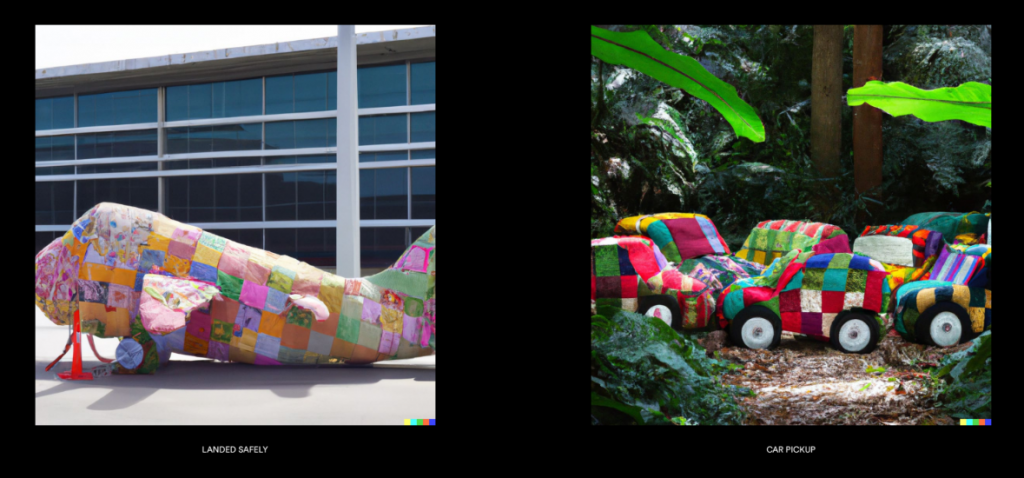 Audry Stewart created a lifestyle instagram account from a bizzarro world in which most artificial things are quilted
Audry Stewart created a lifestyle instagram account from a bizzarro world in which most artificial things are quilted
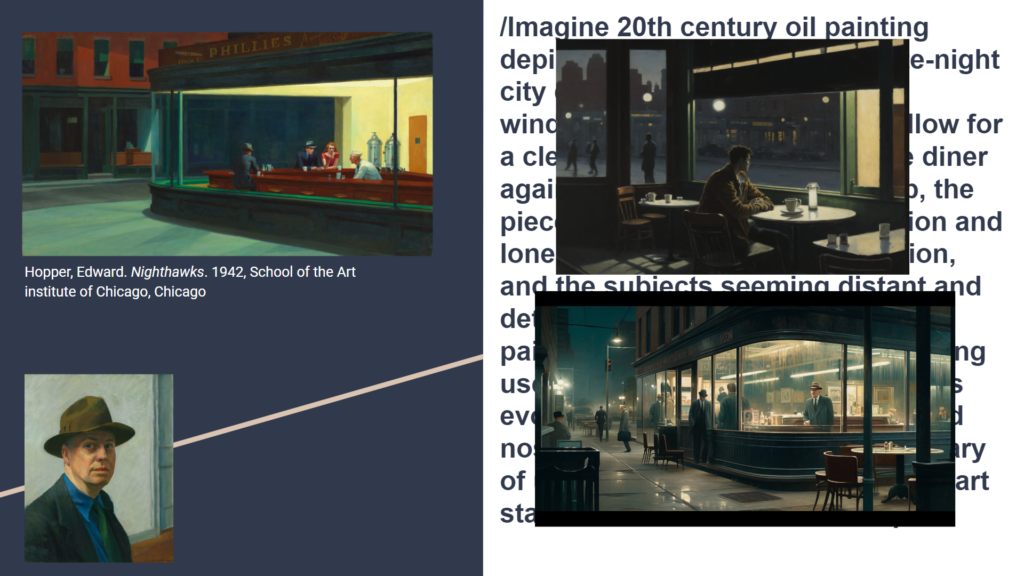 /Imagine A work of iconic art by Ryan Chey
/Imagine A work of iconic art by Ryan Chey
I ask MidJourney to reproduce the various famous artworks throughout history by describing the visual qualities of the work in ridiculously obsessive detail while avoiding actually mentioning the title of the artwork itself, the name of the artist, the movement or genre it’s associated with, or any other references to “reproduction” or “recreation” as to allow for MidJourney to use its own resources instead of directly referencing the original work 1:1. Was I successful? We’ll find out.
Presentation
AI Doppelganger: Who’s more ME?
For this project I trained a roleplay-based AI to act/ talk/ think like me to the best of its ability. This was done through feeding it a mixture of my text messages, tweets and other personal dialogue.
The result will be presented in the form of a presentation/live Q&A guessing game–in place of a proper Turing Test– where classmates can guess which answers are mine and which are the Ai’s.
Presentation
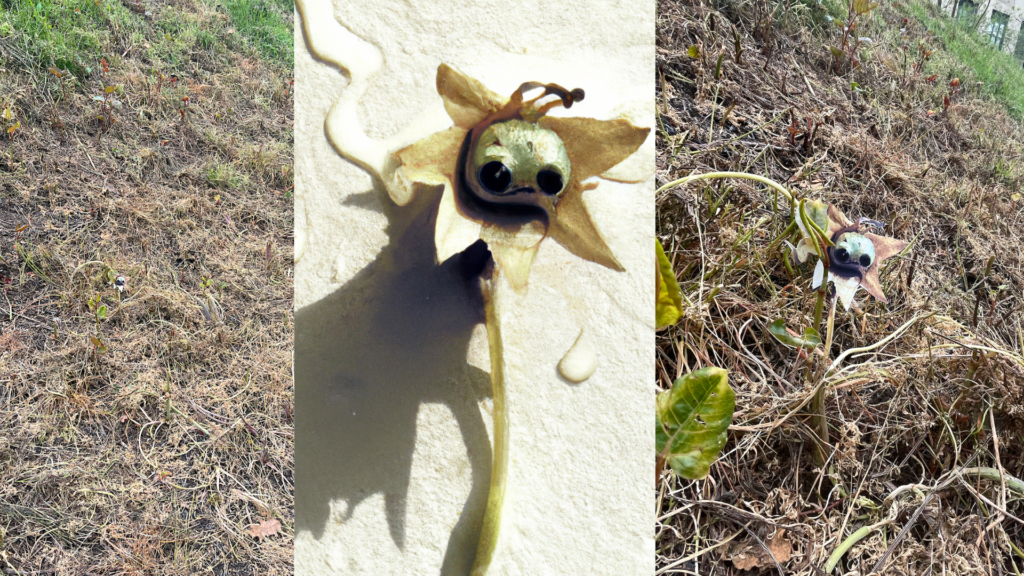
Kelly McDowell hid AI generated printouts of flowers and hid them in the campus
Presentation
 AI Spy by Annie Chong
AI Spy by Annie Chong
Seized by the nostalgia for my childhood books, I took a try at replicating the object searching game, I Spy. In collaboration (and sometimes contestation) with Midjourney, I created a series of images in the style of the I Spy Scholastic books (written by Jean Marzollo with photography by Walter Wick). I then supplemented by writing my own riddles to match the generated photos. I hope to highlight the interesting oxymoron of AI images being best appreciated and unnoticed when being glanced over, and I Spy games requiring very thorough investigation of its images.
Presentation
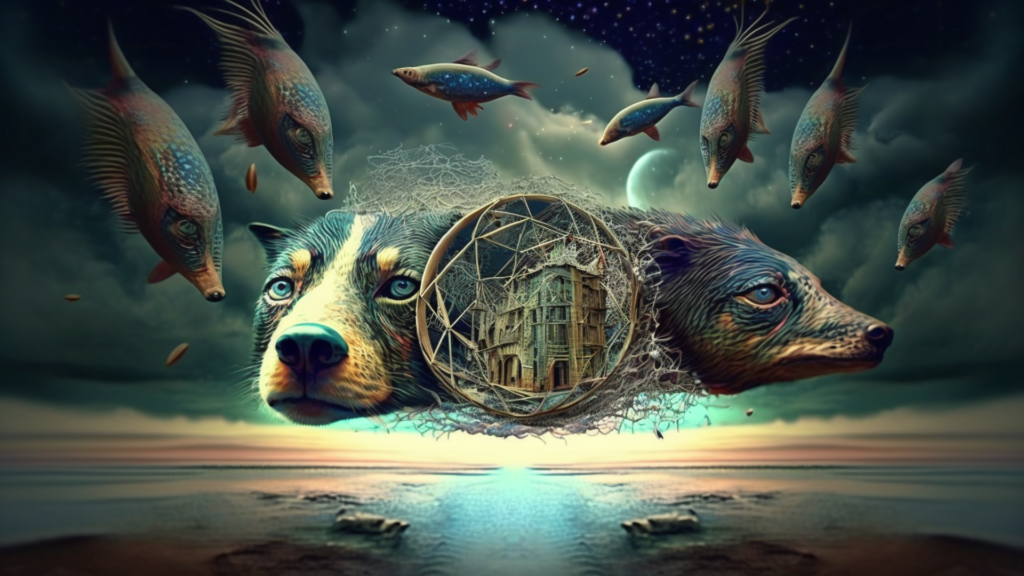
Do AI Deepdream of Electric Sheep?
When AI generated images were very new, I was fascinated by Deepdream reimaginings of images because of how the computer would create abstract and strange artifacts based on patterns that a human would never pick up on. Nowadays, the field is far far more developed and it’s creativity mimics that of humans. However, I was still curious to see what kind of strange “creativity” New AI could come up with. For this project, I wanted to have the AI create unexpected images with almost no human prompting, so I used old images by Deepdream as very noisy inputs, and used as few keywords as possible to generate new, strange iterations of these images. Basically, these are AIs dreaming back and forth between each other.
Presentation
Assignments from Golan Levin’s session, he’s making students create a book or publication:
https://golancourses.net/60120/deliverables/1-aiart/ai-chapbook-gallery-2023/
Most of it is interesting only due to the novelty of the tool, but the Alien Playboy issue is great:
https://golancourses.net/60120/wp-content/uploads/2023/03/im.pdf





